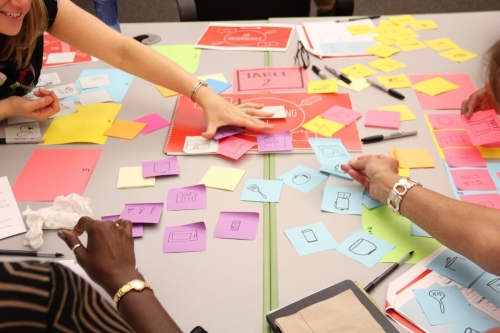
In the past 2-20,000 years, the power of storytelling and its value as a strategic tool has been widely acknowledged. Storytelling, in one form or another, is a vital part of our work. Lately we have been hearing from clients that they want use narrative as a way to understand their business and reach audiences, but they simply don’t know how to begin. What’s the best way to learn your business stories? Start with storyboarding.
How We Use Storyboarding
We of course use storyboarding as a tool when developing creative deliverables (videos and presentations). We also use storyboarding with client groups as a visual thinking tool for surfacing and developing core business stories. Adding characters, emotions and pictures to a good story can help bring it to life in a more meaningful and dynamic way. Plus, it’s fun.
Storyboarding, used in this way, is incredibly helpful for those who are looking to engage and solve problems around:
- Customer experience mapping
- End-to-end process mapping
- Understanding interactions between systems and people
Financial Services Team Storyboards Success Scenarios
We recently took our storyboarding training module one of our financial services clients. Their Operations team needed to develop the story of how their work influences their customer’s experience.
Here’s how our client defined the problem:
When you don’t deal with a customer directly, it’s hard to remember that your value extends beyond processing this transaction or filing that paperwork – that your activity is all in service of a person who is making potentially intensely personal decisions, and needs help.
Customers call their Financial Advisors for advice. Though they may never speak to someone in Operations, their experience can be made or broken by how the Operations team works together. The Operations team needed to understand how their actions could support or be detrimental to customers.
Our half-day session agenda consisted of:
- Reviewing what makes a good story
- Demystifying the act of drawing
- Developing a practice storyboard about breakfast in bed
- Crafting the first draft of their own Operations stories

Session participants left with the assignment – and the newfound skills – to finalize their stories and storyboards in the next two weeks.
And what happens with the storyboards when they’re complete? It depends. This client is going to have their stories professionally drawn and posted up on a wall in the Operations team’s workspace. I can’t wait to see the finished product and hear the rest of their story.
Back



